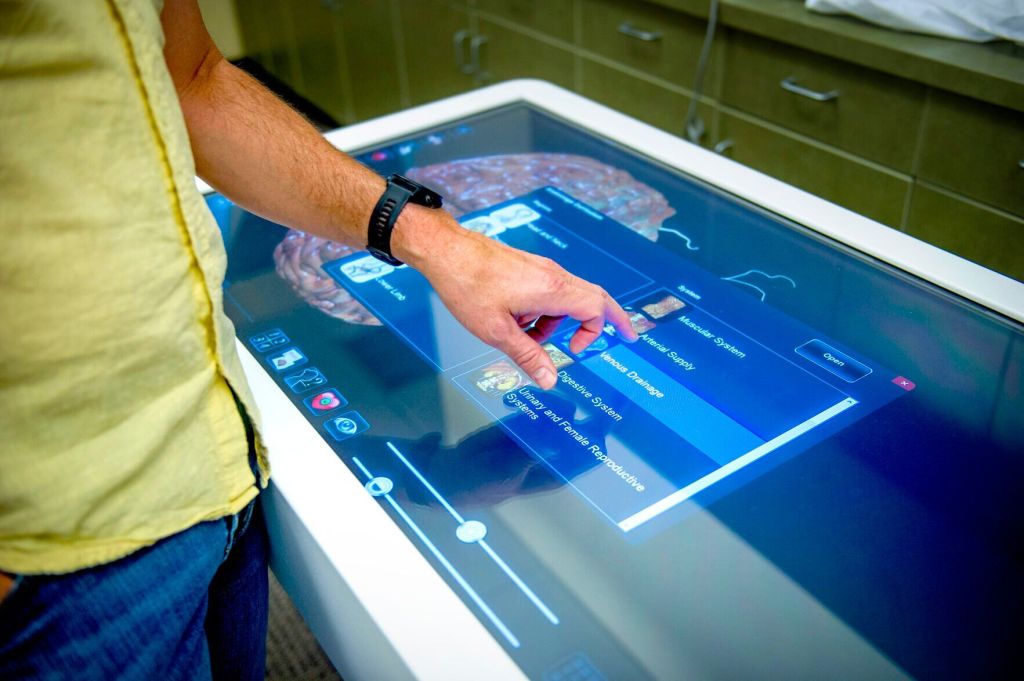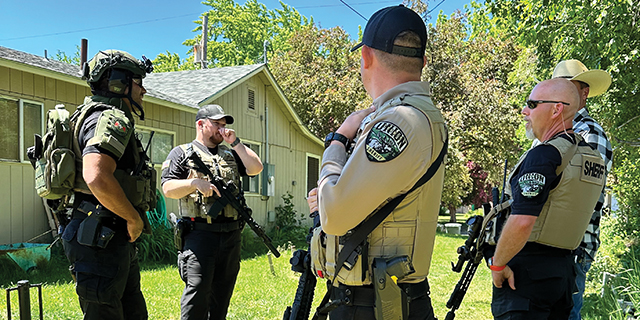Walla Walla Community College acquires new 3D technology to enhance health care teaching
Published 1:00 pm Friday, August 11, 2023

- Benjamin Schultze, dean of nursing and allied health at Walla Walla Community College, on Wednesday, July 26, 2023, selects a mode on an Anatomage, a new medical teaching technology platform that uses 3D imagery.
WALLA WALLA, Wash. — Walla Walla Community College students and professors are in for a new experience this fall after WWCC recently became the first community college in Washington to own an Anatomage — a new medical teaching technology platform that uses 3D imagery.
Benjamin Schultze, dean of nursing and allied health who has been with the college for a year, successfully wrote a grant application to the state of Washington to purchase an Anatomage for each of the two WWCC campuses. The machines cost about $80,000 each.
An Anatomage is a 3D anatomy platform and dissection tool that is quickly replacing schools’ use of cadavers across the U.S. The machine, which allows the user to observe and dissect the human body from any angle or layer, has more than 10,000 pre-programmed medical scenarios.
“If I’m teaching someone who has kidney cancer — renal cell carcinoma — I’ve got the physiology and pathophysiology that fits on here,” Schultze said, referring to the Anatomage. “I can take them through a scan, I can show them what the body looks like.”
Unlike cadavers, the Anatomage allows students to practice the same techniques over and over again. The machine also has a feature that can quiz students on anatomy.
“The cadavers are expensive,” Schultze said. “They’re hard to come by and they’re hard to maintain, but you can do a lot on here.”
Schultze said one of the most exciting features on the machine was the pregnancy simulator, which allows the user to see the body through all stages of pregnancy and allows for dissection all the way down to the fetus.
“I can build different scenarios and show a mom in distress while delivering, and I can increase the heart rate,” Schultze said.
Faculty at WWCC will be trained this September on how to use the Anatomage and how to use it to teach.
Ilona Pease-Verwer, a nursing professor who teaches theory and simulation, said this technology would not only improve the classroom experience for students but for teachers as well. She said typically professors at WWCC develop simulation scenarios themselves, which involves setting a room up and takes a lot of time.
“When you have a bigger school, those roles are all divided between a team of people, and we don’t have that because we’re fairly small, so we all do that on our own,” Pease-Verwer said. “But with the new technology that we’re getting, we don’t have to set up a room because it’s all virtual. The scenarios are already made up for us.”
The college also purchased virtual reality headsets to accompany the Anatomage, which will be used to simulate different medical emergencies for students. For example, they could practice what to do when someone is having a heart attack in real time.
“Specifically with simulation, we can give them experiences that they typically don’t see in the clinical setting,” Pease-Verwer said. “For instance, not every student goes through labor and delivery, so we have high fidelity mannequins that can simulate birth so everyone will have had an experience like that.”
She said the use of simulation technology would provide students with a more well-rounded medical education and give them opportunities to learn things that they might not otherwise. Nursing students typically don’t have the opportunity to work with cadavers, and it’s not common that any health care student is able to practice so many emergency scenarios with just one piece of equipment.
“What we’re trying to do is to give them the theory first and then the simulation where they can apply the theory,” Pease-Verwer said. “So it’s definitely hands-on, and then with the hands-on practice, it will enhance the theory that they’ve learned.”
Schultze said in Washington state, one hour of simulation nursing counts as two hours bedside nursing, meaning students could replace up to 50% of their clinical time with simulation time.
The college’s nursing program is admitting 125 new students this fall in addition to an existing 135 students in the program. Schultze said the master’s in nursing program also is starting this fall. All nursing program spots have been filled for this fall, but pre-nursing courses are available, and the college hopes to have an official pre-nursing track available by next fall. Schultze said across the country, applications to nursing schools have decreased by 40%.
“The idea is also to get pre-nursing back here and have a better pathway to feed people into the nursing program,” Schultze said. “We’re still 7,000 nurses short in the state of Washington. We need nurses.”





